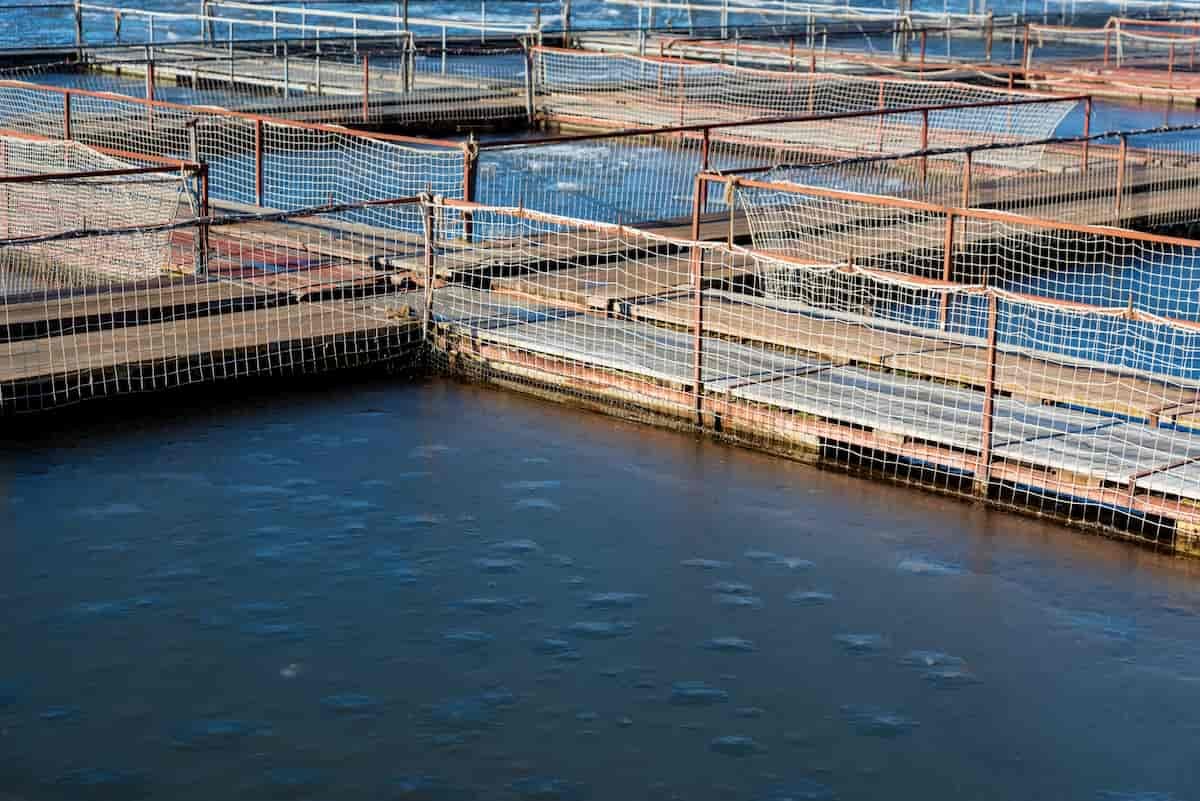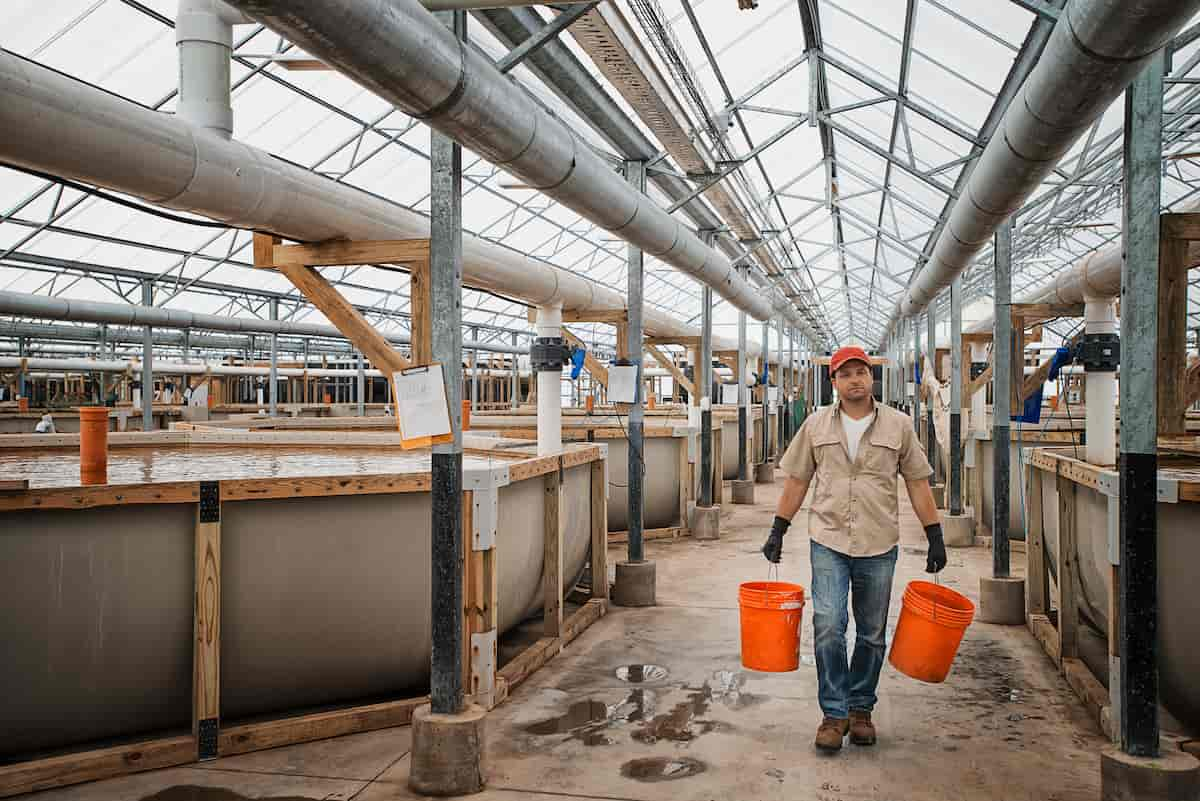Catla fish farming is an excellent way to start a profitable business in the aquaculture industry. With the increasing demand for fish and seafood, the market for Catla fish is rapidly expanding.

How to Start Catla Fish Farming in 10 Steps
Market Research and Feasibility Study
Before starting your Catla fish farming business, conducting thorough market research and a feasibility study is important to identify the potential demand for your products, competitors, and profitability. This step involves collecting and analyzing data on market trends, potential customers, and the cost of production.
Choose a Suitable Location
The next step is to choose a suitable location for your Catla fish farm. This should be a place that is easily accessible, has a reliable source of water, and has adequate space for the ponds. Also, ensure that the soil is suitable for pond construction and that the climatic conditions are favorable for the growth of Catla fish.
Construct Ponds and Install Necessary Equipment
Once you have identified a suitable location for your Catla fish farm, the next step is constructing ponds and installing necessary equipment such as pumps, aerators, and filters. The size and number of ponds you construct will depend on the scale of your business and the amount of Catla fish you plan to produce.
Procure Fingerlings and Feed
The success of your Catla fish farming business depends on the quality of fingerlings and feed you use. Therefore, it is important to procure high-quality fingerlings from a reputable hatchery and provide them with nutritious feed appropriate for their growth and development.
Manage Your Catla Fish
Catla fish thrive in well-oxygenated water, are free from toxins and pollutants, and have a pH level between 7 and 8. Additionally, they require warm water temperatures (between 26 and 32 degrees Celsius) for optimal growth. To provide these optimal environmental conditions, investing in high-quality equipment such as pumps, aerators, and filters is important to maintain water quality in fish ponds.
Catla fish are omnivorous and require a balanced diet with plant and animal protein. Commercially available feeds are available that are designed specifically for Catla fish. Still, you can also feed them locally available feeds such as soybean meal, wheat bran, and rice bran. Feeding them regularly and in the right quantities ensures proper growth and development.
Regular monitoring of your Catla fish can help you identify and address any health issues that may arise. Signs of illness include lethargy, loss of appetite, and abnormal behavior. You can also perform routine water tests to ensure optimal water quality. If you notice any signs of disease, it is important to take prompt action to prevent the spread of disease and reduce the risk of mortality.
Implement Disease Control Measures
Disease outbreaks can be devastating to your Catla fish farming business. Therefore, it is important to implement disease control measures such as proper water management, regular monitoring, and prompt treatment of sick fish.
In case you missed it: How to Build Fish Pond in 10 Steps: DIY Guide for Beginners

Harvest and Market Your Catla Fish
When your Catla fish are mature and ready for harvesting, you can market them to local fish markets, restaurants, or individual buyers. You can also process and package them for sale as fillets, frozen or dried products. It is important to have a marketing plan and identify potential customers beforehand.
Evaluate Your Performance and Improve
To ensure the success of your Catla fish farming business, it is important to evaluate your performance periodically and identify areas that need improvement. You can analyze your financial statements, production records, and customer feedback.
Expand Your Catla Fish Farming Business
Once your Catla fish farming business is established and profitable, you can consider expanding your operations by increasing the number of ponds, improving production processes, or diversifying your products.
Stay Informed and Up-to-Date
Finally, staying informed and up-to-date with the latest trends and developments in the Catla fish farming industry is important. This can be achieved by attending conferences, workshops, and seminars, subscribing to industry publications and networking with other Catla fish farmers. Doing so lets you stay competitive and take advantage of new opportunities.
In case you missed it: How to Start RAS Fish Farming in 10 Steps: DIY Guide for Beginners

Conclusion
In conclusion, starting a Catla fish farm can be a lucrative and rewarding business venture. With the right knowledge, resources, and effort, you can establish a successful Catla fish farm and enjoy a steady income.
- Feed Your Flock for Less: Top 10 Tips to Save on Chicken Feed
- Ultimate Guide to Ossabaw Island Hog: Breeding, Raising, Diet, and Care
- Hatching Answers: The Top 10 Reasons Your Chickens Aren’t Laying Eggs
- Eggs and Economics: Breaking Down the Cost of Raising Backyard Chickens
- Defend Your Greens: Proven Methods to Keep Iguanas Out of Your Garden
- Ultimate Guide to Cinnamon Queen Chicken: A Comprehensive Guide for Beginners
- Ultimate Guide to California Tan Chicken: Breeding, Raising, Diet, Egg-Production and Care
- Ultimate Guide to Marsh Daisy Chicken: Breeding, Raising, Diet, and Care
- 10 Types of Chicken Farming Businesses You Can Start for Profits